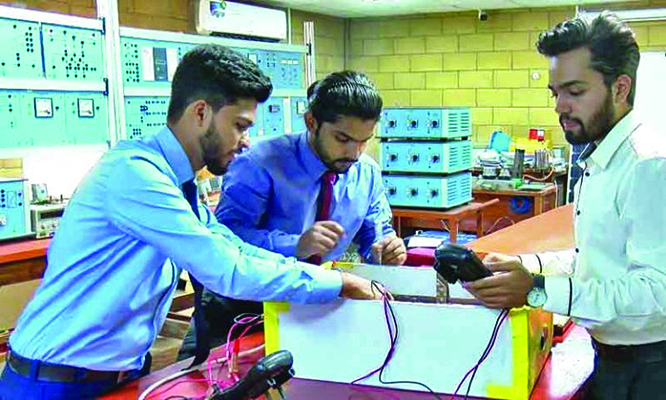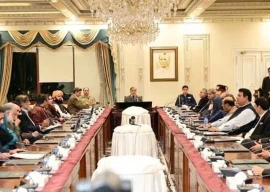
It took four months of hard work and sleepless nights, and investment of Rs150,000, diligence and dedication and firm belief in an imaginative initiative for Saad Sarmad and others in his team of four to materialise ‘Burraq’.
Sarmad, along with Abdullah Ali, Malik Muhammad Ali and Zafeer Ahmad Khan, all budding engineers from the Usman Institute of Technology, have put together a low-cost, water-powered turbine, which, they believed, could be of significant help in addressing electricity shortage.
Power-starved countries have vied for cheap energy sources and eco-friendly ways of generating them, and Pakistan is no exception.
The turbine
The ‘Burraq’ turbine can run on water from stormwater drains and other waterways in cities.
The structure of the turbine was made of aluminium, which makes it lightweight and hence, easier to carry. A motor is installed within the structure of the turbine works to produce electricity that can be transmitted to the grid and instantly supplied to consumers or stored in batteries for future use.
Sarmad and his team tested the turbine after installing it at one end of the Hub River.
He told The Express Tribune that they initially deliberated on employing sources other than water for producing electricity, but eventually decided to stick to water due to its preponderance as a resource.
Using this resource, the students were able to assemble a turbine that is low-cost, low-maintenance and long lasting.
They are currently liaising with various government departments as well as power utilities to find a reliable platform for the promotion of their work
According to them, if the government adopts the technology and power generation companies invest in it, Pakistan can make significant progress in allaying electricity shortage.
“The turbines will help reduce pressure on K-Electric and the Water and Power Development Authority, and industrial units can rely on these to reduce their production cost,” said Sarmad.
‘The smaller the better’
According to Sarmad, just 28 per cent of electricity in Pakistan is generated from water.
He attributed this to the high cost and long time needed for the construction of dams for the purpose.
Pakistan’s first technical university all set for launch
“Hence, the initial cost tends to skyrocket,” he explained.
Besides, he pointed out, large projects often fall prey to the whims and fancies of political parties.
“Investing in water turbines, on the other hand, means that the river water will no longer be wasted,” he said. “When small waterways will be used for electricity generation, there will no longer be the need for constructing dams.”
Fit for all
According to Sarmad and his team, the initiative will particularly benefit those settled along riverbanks and streams in mountainous regions.
As Pakistan is primarily an Agrarian country, most settlements are located along rivers or around canals, he said, adding that water generally used for agriculture could also be utilised for generating electricity.
Besides, Sarmad said, the use of Burraq can revolutionise tourism in Northern Pakistan. Elaborating further, he said that these water turbines could produce cheap electricity for domestic use and hotels there.
“Swat, Naran, Hunza, Shogran and Gilgit are popular tourist destinations, where water flow is ideal for small water turbines. Installing them there will facilitate the socio-economic development of these regions,” he said.
Sarmad added, “Alongside this, urban centers like Karachi, Lahore, Islamabad and Peshawar can make use of the turbine by installing it on the sewage lines that run through these cities.”
Similarly, Dr Abdul Qadir, who oversees projects for hydroelectric power generation, including Burraq, said the cost of electricity production could be reduced by two-thirds if large-scale turbines were developed.
He said if Burraq turbines were permanently installed on Neher-e-Khayyam, they could generate, for free, the amount of electricity that met the needs of three hotels.
This story is part of a weekly series that seeks to bring to light the unsung heroes of Karachi - the hawkers, traders, doctors, teachers, engineers, lawyers and daily-wage labourers. It is they who make Karachi the city of lights.
Published in The Express Tribune, January 25th, 2021.


























1714117028-0/BeFunky-collage-2-(1)1714117028-0-270x192.webp)




1714370039-0/ojwilson-(1)1714370039-0-270x192.webp)
-(1)1714378140-0/AliAminMaryam-(4)-(1)1714378140-0-270x192.webp)








COMMENTS
Comments are moderated and generally will be posted if they are on-topic and not abusive.
For more information, please see our Comments FAQ